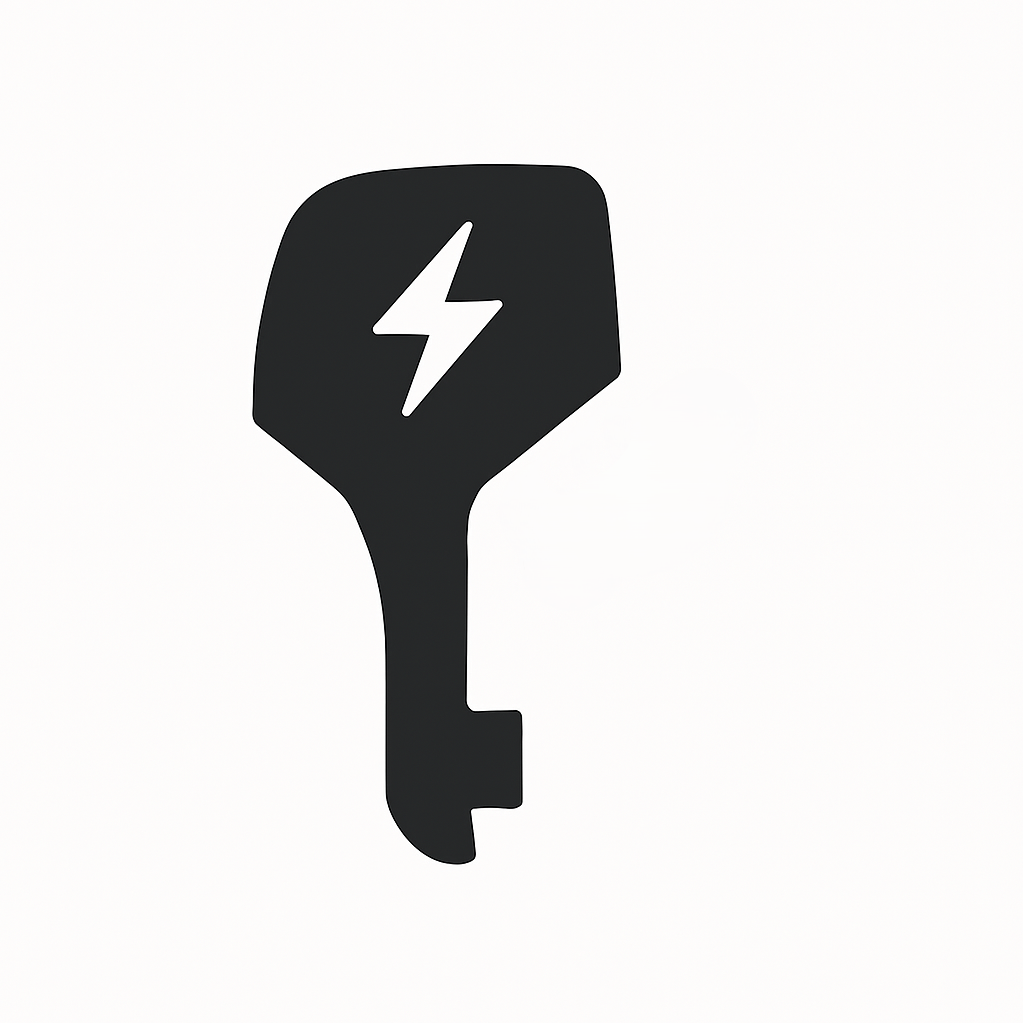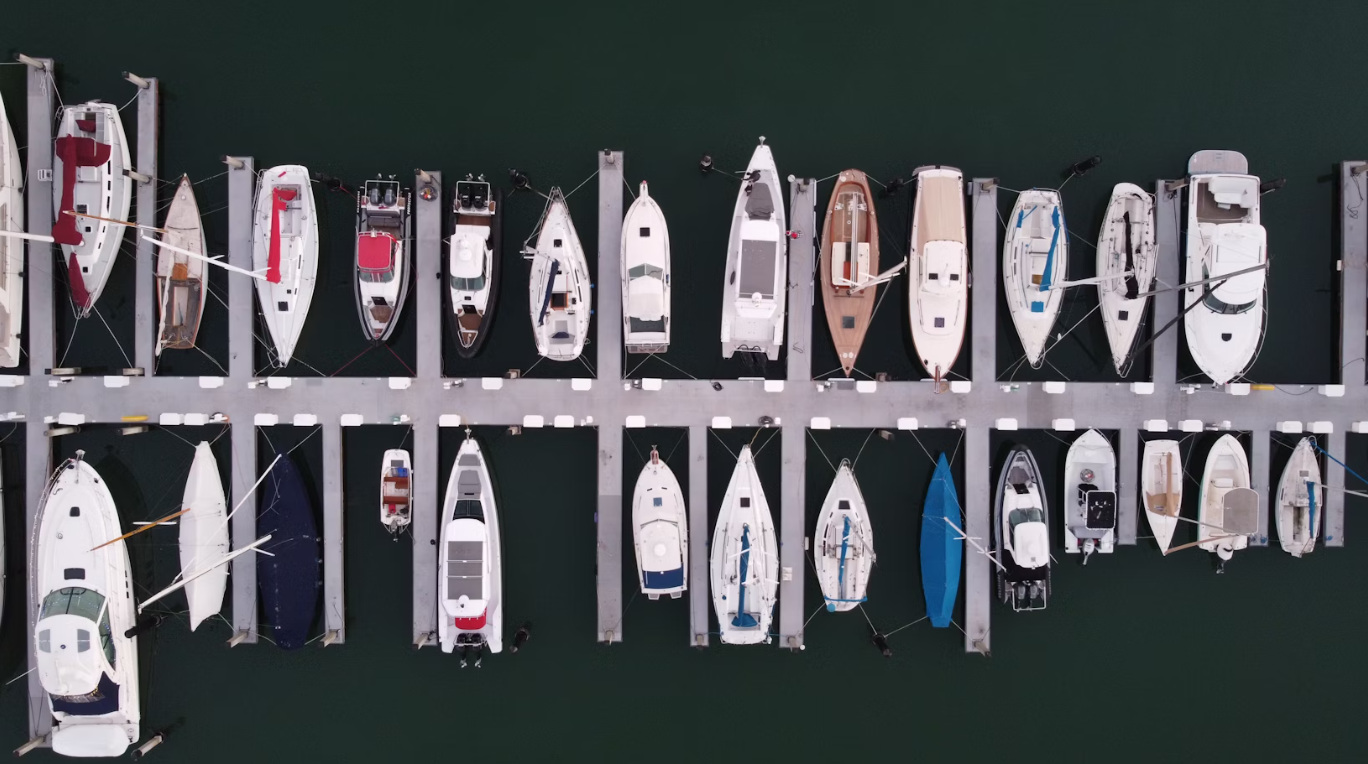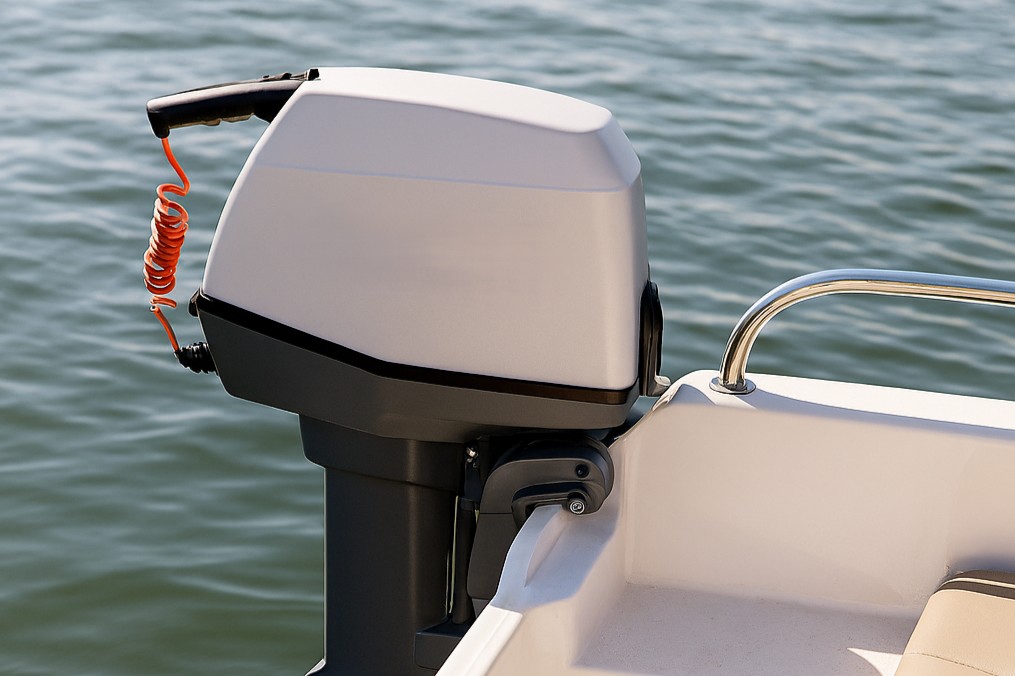What types of boats come to mind when you think of a 70hp outboard motor? Actually, this power range is popular among recreational boaters looking for a balance between performance and efficiency. Positioned in the mid-level segment of the outboard market, a 70hp motor offers more power than small hobby motors but avoids the size, cost, and fuel demands of higher-horsepower options.
With this balance, many boaters find that a 70hp outboard is ideal for their needs. In this guide, we will explore what this power level can deliver, which boat types are the best match, and how to choose a 70hp outboard.
Is a 70HP Boat Motor Powerful Enough?
Speed Expectations
A 70hp outboard motor is great for lightweight boats, especially when they’re properly matched with the hull and aren’t overloaded. This type of motor can help small boats, like bowriders, lightweight runabouts, and many Rigid Inflatable Boats (RIBs) that are 14 to 18 feet long, reach cruising speeds between the mid-teens and mid-twenties in knots (about 20 to over 30 mph).
In calm water, these speeds can feel quite lively, and the motor can maintain a steady pace even against moderate currents or light winds. While larger boats that are 18 feet or more, or those that are heavily loaded, might achieve slightly lower top speeds, they can still cruise efficiently.
Torque
A 70hp motor offers enough power for quick acceleration and smooth handling in typical coastal, estuary, and inland waters. If you’re planning to tow light water skis or a small tube, this motor can handle it with a lightweight boat and a few passengers. However, it’s not designed for heavy-duty watersports that require prolonged towing. If you’re trying to tow multiple passengers or do high-speed towing for an extended time, you might find the motor lacking in power and acceleration can feel slower. Overall, this motor performs well in low to mid-range speeds, which is beneficial for navigating shallow waters or dealing with light winds.
Fuel Efficiency and Load Handling
A 70hp petrol outboard engine can be quite fuel-efficient when you run it at moderate speeds, typically between 3,500 and 4,000 revolutions per minute (rpm). However, how much fuel it actually uses varies widely based on several factors like the design of the boat’s hull, the weight of the passengers and gear, and the conditions of the water.
To illustrate this, let’s consider two similar boats equipped with the same 70hp engine, cruising at different speeds:
Fuel Consumption of Two Boats
– Boat A: Crusing at 3,600 rpm (moderate speed)
– Weight: 1,500 lbs (including passengers and gear)
– Fuel Consumption: 3 gallons per hour
– Distance Covered in 1 hour: 20 miles
– Boat B: Cruising at 5,000 rpm (higher speed)
– Weight: 1,500 lbs
– Fuel Consumption: 6 gallons per hour
– Distance Covered in 1 hour: 25 miles
In this scenario:
– Boat A uses 3 gallons of fuel to cover 20 miles, which translates to 6 miles per gallon (MPG).
– Boat B, on the other hand, uses 6 gallons to cover 25 miles, resulting in approximately 4.17 MPG.
From this example, we can see that while Boat B is traveling faster, it consumes significantly more fuel compared to Boat A, demonstrating how the cruising speed affects fuel efficiency.
To maximize fuel efficiency with a 70hp motor, it’s essential to manage the boat’s load carefully — including the weight of fuel, equipment, passengers, and supplies. Additionally, maintaining steady engine speeds, optimizing the boat’s trim, and selecting the right propeller can lead to a 10-20% improvement in fuel economy under practical conditions.
Factors Affecting Performance
Performance depends on four primary variables: total boat weight (including fuel, people and kit), hull design (planing versus displacement, deadrise angle), propeller selection and intended use (cruising, fishing, towing). A well-designed planing hull of the right length will make the most of the 70hp output; a heavy, poorly matched hull will feel underpowered. Additionally, water conditions, wind, and tide can influence the real-world performance of a 70hp outboard. Small modifications like adding trim tabs, adjusting propeller pitch or lightening gear can significantly improve handling and acceleration.
| Boat Type | Typical Length | Expected Top Speed | |
|---|---|---|---|
| Aluminium fishing boat | 3.5–5.0 m (≈11–16 ft) | 18–28 knots | |
| Small RIB / centre console | 4.5–5.5 m (≈14–18 ft) | 20–32 knots | |
| Small pontoon | 4.5–6.0 m (≈14–20 ft) | 10–18 knots | |
| Light bowrider / runabout | 4.3–5.5 m (≈14–18 ft) | 18–28 knots |
Speeds and lengths are indicative averages based on manufacturer test data for 70 HP outboards under light to medium load conditions.
What Size and Weight Boat Can a 70HP Motor Handle?
Ideal Boat Length (Typically 14–18 ft)
The practical sweet spot for a 70hp outboard is generally boats between 14–18 ft (≈4.3–5.5 m). Light 14 ft hulls plane quickly, while heavier 18 ft hulls still perform well if built with modern lightweight materials. Boats under 14 ft may be overpowered and harder to handle, while boats above 18 ft may feel sluggish. This length range balances performance, economy, and comfort.
Recommended Weight Limit
For efficient planning, try to keep your displacement below around 900–1,200 kg (about 2,000–2,650 lb). While heavier crafts can be fun, they might not accelerate as quickly and could use more fuel. Remember to consider the weight of fuel, passengers, and your gear. It’s always a good idea to check the manufacturer’s recommended engine size charts. Don’t forget that how weight is spread out, including battery packs for electric motors, can really impact how your craft handles and sits in the water.
Boat Types Suitable for a 70 Horsepower Outboard
Below are boat types that commonly pair well with a 70hp outboard. Each entry explains why the pairing works, practical limitations, and examples of real-world usage.
Aluminium Fishing Boats
Aluminium fishing boats (often 11–16 ft / 3.3–4.9 m) are ideal for a 70hp outboard. Their light hulls allow fast planing with modest power. Anglers benefit from fuel efficiency and the ability to carry rods, tackle, and a couple of passengers. These boats handle inland waters and sheltered estuaries well. Stability is good with light to moderate load. Heavier kit may slightly reduce top speed, but the 70hp motor still performs adequately.
Center Console Boats (Small to Mid-Size)
Small centre consoles up to 18 ft (≈5.5 m) make good use of 70hp for versatile coastal, estuary, and river use. Sea-keeping is improved compared with tiny runabouts, and the motor copes with choppy coastal conditions when weight distribution is correct. Extra features like leaning posts, small cabins, and storage do not overly compromise performance.
Rigid Inflatable Boats (RIBs)
Small to mid-size RIBs are ideal for 70hp. They plane quickly, have excellent manoeuvrability, and accelerate well. RIBs are used for tenders, light patrol work, training, and leisure. Lightweight models achieve lively speeds, while heavier RIBs may see slightly reduced top speed. The 70hp outboard remains versatile for both calm and slightly choppy UK waters.
Jon Boats or Flat-Bottom Boats
Jon boats and flat-bottom skiffs work well on rivers, lakes, and calm estuaries. They provide quick planing and reliable acceleration. Flat-bottom hulls may feel uncomfortable in rough water, so performance depends on local conditions. The motor handles light work, fishing, and occasional short-haul transport efficiently.
Small Pontoon Boats
A single 70hp outboard on a small pontoon (14–18 ft) provides comfortable cruising on inland waterways. Speed is lower than planing hulls, but stability and deck space are excellent for family use. Occasional light towing is feasible, and acceleration is sufficient for leisure navigation.
Lightweight Bowriders or Runabouts
Lightweight leisure boats benefit from 70hp, offering lively cruising and occasional watersports. Serious skiing or towing multiple riders may require more power. For short, casual outings, a 70hp provides sufficient torque and enjoyable handling. Hull shape, weight, and passenger distribution will affect speed and planing efficiency.
| Boat Type | Typical Length | Suitability (1–5) | Notes |
|---|---|---|---|
| Aluminium fishing boat | 3.5–5.0 m | 5 | Well matched for planing and economy |
| Small RIB | 4.5–5.8 m | 5 | Excellent acceleration and handling |
| Small pontoon | 4.5–6.0 m | 4 | Good for cruising, limited top speed |
| Light bowrider / runabout | 4.3–5.5 m | 4 |
Limitations of a 70 Horsepower Outboard
Not Suitable for Heavy Offshore Boats
Large offshore cruisers, heavy fishing boats, or production boats for rough seas typically need more than 70hp. Open-sea operation often demands redundancy, higher top speeds, and ability to handle rougher waters. Safety margins may be compromised on larger vessels.
Limited Speed with Full Passenger Load
Extra passengers, fuel, and kit reduce top speeds and planing efficiency. Heavier loads also increase fuel consumption. If frequently running at full passenger capacity, consider more powerful motors. Engine-to-boat weight ratio is a practical guide for assessing suitability.
Tips for Choosing the Right Boat for a 70HP Motor
Consider Hull Type and Boating Purpose
Select a planing hull for speed and efficiency. For calm inland waters or stability, consider pontoons or chined aluminium boats. Hull material, shape, and use type affect fuel, handling, and comfort.
Check Engine-to-Boat Weight Ratio
Ensure the manufacturer lists 70hp within the recommended engine range. Verify transom strength and engine mounting. Correct ratio ensures safety, performance, and efficiency.
Compare Electric vs. Gas Options Based on Use
Electric 70hp is ideal for short trips, low-noise zones, and minimal maintenance. Petrol 70hp suits longer coastal runs and heavier loads. Consider range, refuelling convenience, and trip duration when deciding.
Choosing a 70HP Electric Outboard Motor
The market for 70hp electric outboard motor systems and other high-output marine electric propulsion options has been growing rapidly. If you are looking at a 70hp electric boat motor, consider the trade-offs. Think about the environmental benefits, noise reduction, low maintenance, and real-world limits. Electric motors provide smoother throttle control. This makes them great for precise movements in narrow channels, marinas, or calm waters.
Why Consider an Electric 70HP Motor?
A 70hp electric outboard gives you quiet operation, near-instant torque, low vibration and lower on-water emissions. These electric motors are perfect for sheltered waters, nature reserves, low-wake areas, and canals, as they significantly reduce noise and disturbances, making boating a more peaceful experience for everyone. Plus, they require much less maintenance than traditional outboards. With fewer moving parts, you won’t need to worry about oil changes or carburetors, which can translate to lower overall operating costs—especially if you plan your trips wisely and charge your motor efficiently.
If you’re a beginner, an electric outboard is an excellent choice. They are easier to control, particularly at low speeds, making throttling and reversing feel more forgiving and straightforward. In short, switching to an electric outboard not only enhances your boating experience but also offers practical benefits for your wallet and the environment.
How a 70HP Electric Boat Motor Compares to Gas-Powered Models
Electric motors usually deliver higher instantaneous torque than petrol equivalents, improving acceleration from rest and low-speed handling. The major limitation is energy density: batteries weigh more than fuel, and charging time and available range dictate usage. For day trips with short hops, marina loops, or protected coastal areas with shore charging, an electric 70hp can be highly practical. Petrol motors still outperform in range, quick refuelling, and heavy-load scenarios. Performance under load varies with battery state, so careful planning of trips and reserve margins is essential.
| Aspect | Electric 70hp | Petrol 70hp |
|---|---|---|
| Instant torque | Excellent | Good |
| Range (day cruising) | Limited by kWh and charge points | Longer; rapid refuelling |
| Maintenance | Lower (fewer fluids) | Higher (fuels & fluids) |
| Noise & vibration | Very low | Moderate |
| Environmental impact | Minimal | Moderate emissions |
Best 70 HP Outboard Motor Brands (2025)
As the boating market changes, more and more 70hp outboard motors are becoming available, giving you plenty of options for your boat. Let’s explore the best brands for 2025 and help you find the perfect fit for your needs.
1) ExploMar — WAVE 70 Electric Outboard System
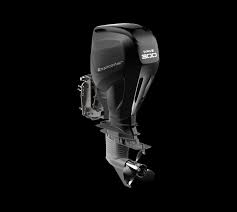
Best for: Commercial workboats, lake/harbour operators, eco-zones, fleets targeting low TCO.
- High-torque 70 HP class electric drive with instant throttle response.
- Lower lifecycle costs: typical energy cost ~1/6–1/8 of petrol outboards, with far less maintenance.
- Quiet & clean: low noise (~55–65 dB), zero exhaust — better for passengers and crew.
- Smart system: integrates ExploMar SI-90 battery module(s) and SmartCaptain telemetry for range and health monitoring
@insider_explomar ExploMar WAVE70+ – The ultimate lightweight HIGH-PERFORMANCE electric outboard! ✅ Ultra-light motor & battery ✅ Redesigned gearbox = MAX power Go farther, faster, smoother! #ElectricBoating #electricoutboard #outboard #boatlife
2) Yamaha — F70A Four-Stroke
Best for: Recreational fishing boats, charters, and operators prioritising reliability and broad service coverage.
- Proven, lightweight 70 HP platform with excellent fuel economy and low noise.
- Extensive dealer/service network across APAC, strong resale value.
- EFI and corrosion-resistant design for saltwater use.
3) Mercury — FourStroke (75 HP Class)
Best for: RIBs and leisure craft seeking smooth power and modern controls.
- Known for high-output alternator and refined vibration control.
- Options such as Command Thrust gearcase improve thrust on heavier hulls.
- Global parts and service support from Mercury Marine.
4) Suzuki — DF70A Four-Stroke
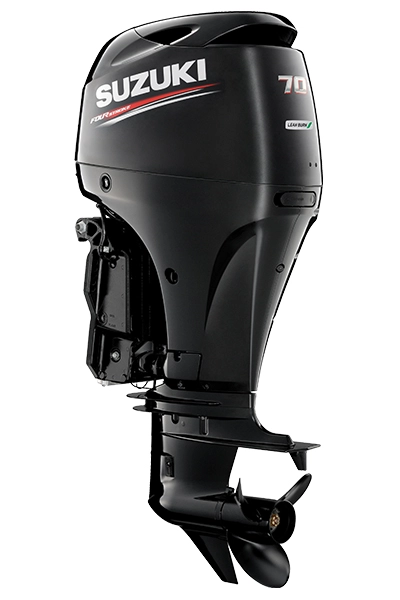
Best for: Light commercial and family boats seeking value and low fuel burn.
- Lean Burn Control for notable fuel savings at cruising speeds.
- Corrosion-resistant materials; wide international support footprint.
- Good balance of price, economy, and reliability.
Quick Comparison (70 HP Class)
| Brand | Type | Standout Strength | Best For | Notable Feature |
|---|---|---|---|---|
| ExploMar WAVE 70 | Electric | Lowest lifecycle cost, zero emissions | Commercial operators & eco-zones | SmartCaptain telemetry; scalable SI-90 battery bank |
| Yamaha F70A | Four-stroke petrol | Reliability + huge service network | Recreation, charters | Lightweight package; strong resale |
| Mercury FourStroke (70 class) | Four-stroke petrol | Smooth, quiet power | RIBs, performance leisure | Command Thrust gearcase option |
| Suzuki DF70A | Four-stroke petrol | Fuel efficiency & value | Light commercial & family boats | Lean Burn Control System |
Conclusion
A 70hp outboard motor is a versatile choice for various boating activities, catering to anglers, family boaters, and small coastal cruisers. It performs best on hulls ranging from 14 to 18 feet with a moderate load. Petrol-powered motors are practical for long distances and handling heavier loads. But electric versions of this motor are ideal for short trips due to their quiet operation and low maintenance needs. It’s essential to match the engine to the hull and consider different user scenarios, so consulting manufacturers is recommended for optimal results.
Frequently Asked Questions
1. Can a 70HP motor be used for watersports like waterskiing or tubing?
Yes — for single skiers or occasional tubing with lightweight runabouts or bowriders. Heavier boats or multiple riders require more power. Test towing under real conditions before use.
2. How does propeller choice affect a 70hp outboard’s performance?
Pitch, diameter, and blade count affect acceleration, top speed, fuel economy, and handling. Lower-pitch props give better acceleration but lower top speed, while higher-pitch props favor speed but may reduce low-end thrust. Choose props based on boat load, hull type, and intended use. Professional propeller shops or manufacturers often provide rpm guidelines for optimal match. Swapping props seasonally or when changing use (towing vs cruising) can enhance performance.
3. What maintenance should I expect for a 70HP petrol outboard?
Routine tasks include oil and filter changes (four-stroke engines), periodic gearbox oil changes, flushing saltwater engines after use, inspecting or replacing anodes, checking spark plugs, fuel lines, and the propeller. Following manufacturer-recommended intervals prolongs engine life and ensures predictable running costs. Seasonal inspections of mounting brackets, bolts, and controls are also recommended, especially before extended trips.
4. How far can a 70hp electric outboard go on a single charge?
Range depends on battery capacity, hull type, speed, load, and sea state. Many 70hp-equivalent electric systems cover tens of nautical miles at low cruising speeds — ideal for day trips, marina hopping, or protected coastal waters. Battery management, temperature, and charging strategy influence real-world range. Always plan trips with a margin of safety, including potential delays or detours.
5. Can I install a 70hp outboard on a boat rated for 60hp?
No, you shouldn’t install a 70 HP outboard on a boat rated for 60 HP. It would exceed the legal and safety limit on the builder’s plate, void insurance and warranty, and could make the boat unstable or damage the transom. Always stay within the manufacturer’s rated maximum horsepower.
References
- ExploMar
- Yamaha Marine (AU) — Official
- Mercury Marine — Official
- Suzuki Marine — Official
- Boating Magazine
- UK Marine & Coastguard Agency (MCA) — Small Vessel Code — Construction & Machinery Requirements.
